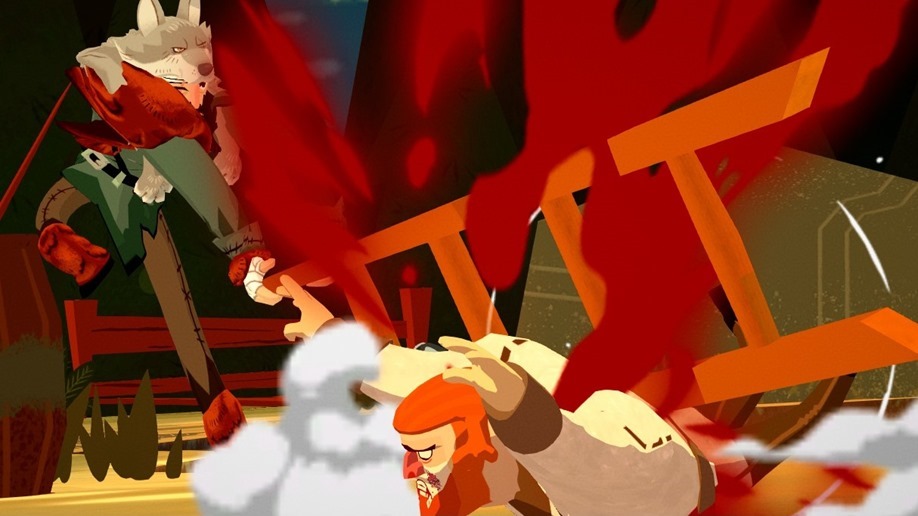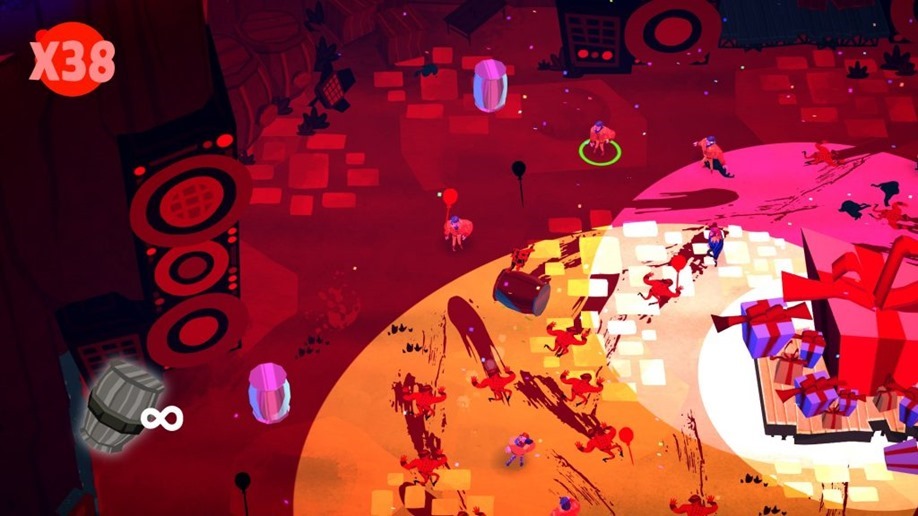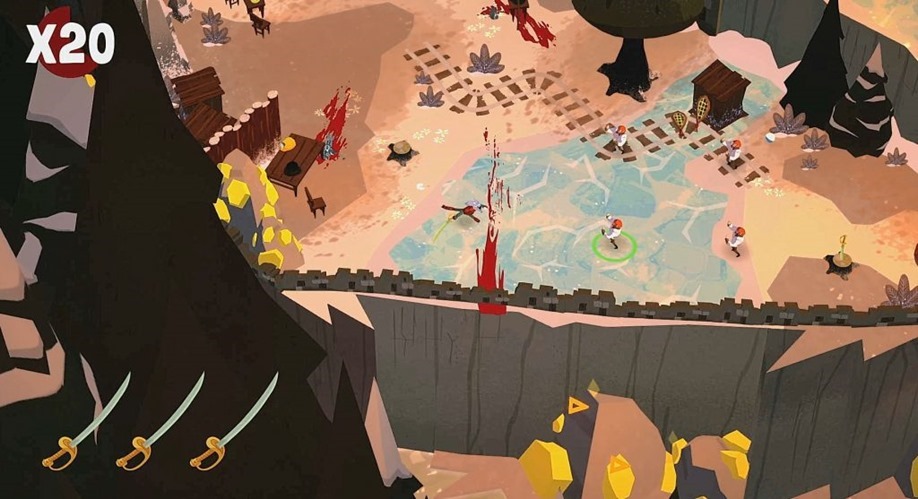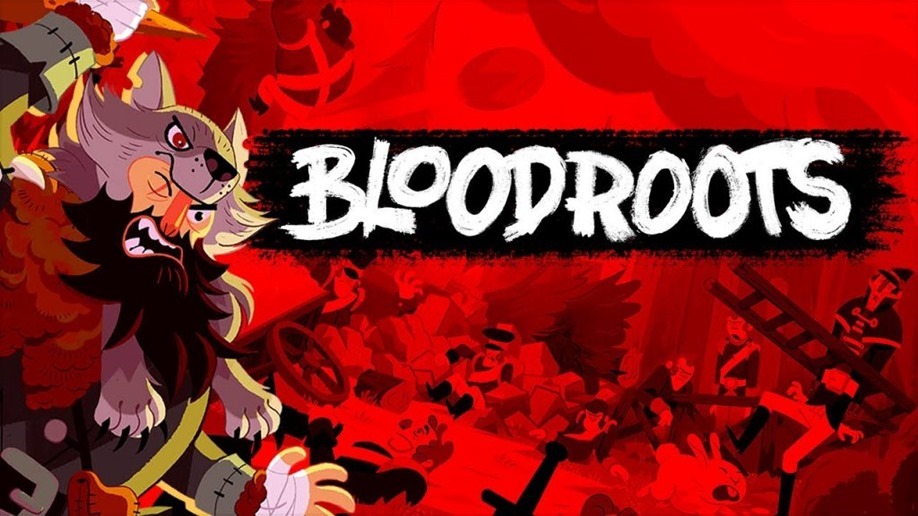You want to know why Quentin Tarantino is the acclaimed director that he is? It’s not his shot composition, or his cinematography or even his dialogue (we get it, rich people can be sad too). What makes Tarantino so good is that he knows what he’s good at and doesn’t try shake things up too much. It’s a consistency in his filmography that truly sets him apart from other directors that want to have their cake and eat it too, going to great lengths to branch out in an attempt to broaden their scope and appeal.
In a sense, I wish Bloodroots, beyond the general aesthetic of his films, took Tarantino’s consistency and ran with the developer’s best ideas because when this game hits, it hits. The vast majority of Bloodroots is a tremendous high-octane killing spree that incorporates the “glass cannon” approach to combat in a way that’s fluid, dynamic and utterly satisfying. The problems with Paper Cult’s action game tend to stem from when it gets tired of the excellence it so quickly establishes and sabotages itself with gameplay segments that feel disconnected and abundantly frustrating.

So let’s first talk about what Bloodroots does right. I briefly mentioned the “glass cannon” combat system in the intro and I’m not sure if that’s the actual way to describe the combat in Bloodroots or I’m just being an utter ponce (I’ll bank on the latter). This game’s combat is glass cannon-esque because the player character, Mister Wolf, is an absolute machine of devastation.
Every enemy he encounters on his Revenant-like quest for revenge against the man who killed him, or at least tried to, is felled in a single hit bar one or two variations. The flip side to that is the same rule applies to him, with the weakest of stationary grunts spreading your blood across the plains you’re roaming. It makes for combat filled with snap decisions and precision as you attempt to claw your way through hundreds of thugs throughout the game.
The combat in Bloodroots isn’t weighty because of the chunky sound effects given to every lethal item (although it certainly helps) but rather because it’s a system built on harsh consequences to the slightest mistake. It can be brutal, don’t get me wrong, but given the arsenal of weapons available to you and how fast respawning is, dying to from the axe blow of an outraged guard never feels frustrating. It feels earned, in a sense.

I say there’s an arsenal of weapons available to Mister Wolf, but that’s not technically true. Sure, there’s the expected axes, chainsaws and rifles sprinkled around the game’s lengthy and robust levels but one of Bloodroots biggest strengths is the implementation of the environment as a weapon itself. Sometimes the only killing apparatus you need to be effective with in the face of a hammer-wielding giant is a carrot. Or a head of lettuce.
Hell, in a pinch Mister Wolf isn’t too shy to rip off the skinned remains of a raccoon and clobber his foes over the head. The sheer variety of the weapons in Bloodroots is staggering, not only aesthetically but mechanically. Even in the last few levels of the game you’ll still find unique killing objects, household or not, that never fail to be satisfying in their implementation.

If that was all Bloodroots was about then it would be a hands-down recommendation for anyone looking for a quick adrenaline kick. While Blood Roots truly excels on this front, it fails dismally on others. In particular, the levels of the game that happen to be designed for platforming. Look, I’ll die on this hill if it comes to it but I firmly believe that if you’re making a platformer then an isometric camera angle is maybe the worst decision you could possibly make.
The tilted angle just obscures too much, throwing depth perception awry and making any kind of precision movement tediously frustrating. It’s what baffles me about Bloodroots because in-between the rigorous rounds of revenge murder you’re forced into some laborious platforming sections. I understand the theory around their inclusion, breaking up what could be a thoroughly draining experience but they halt any kind of flow you develop. Bloodroots is about killing things fast, not dying over and over because it’s almost impossible to judge the distance between two ledges. It’s made worse by a jump that never feels as responsive as you’d like it to be, resulting in countless deaths that feel at odds with the rest of the game.

Bloodroots is so close to an excellent game, it’s in spitting distance of the title. Yet it unfortunately stumbles upon the problem of trying to do too much with what it has. Cut the platforming segments, leave in all the grisly combat, sharp writing and Bloodroots would be a far more enjoyable experience.
Which isn’t to say that it’s not, Lord knows I’m wary about coming across as too negative on this game. You should play it because it really is a fantastic little exercise in cathartic cartoon violence. It’s just when Bloodroots has it’s cake plopped down in front of it and decides to start tucking into it without flight or fancy that the cracks in its excellent array of systems begin to show. Sometimes, it’s not better to be a jack of all trades. Maybe being the master of one in this case would have been a better call.
Last Updated: March 5, 2020
| Bloodroots | |
|
Bloodroots is an aesthetically gorgeous, grindhouse inspired action game with a glorious combat system that’s unfortunately spoiled by some poorly designed platforming segments that just refuse to gel with the game’s core mechanics.
|
|
|---|---|
| Bloodroots was reviewed on PC | |
|
76 /
100
| |





















